Exercise
How to submit an article:
- Registered users can submit any published journal article that has a unique DOI (Digital Object Identifier) name or link to Research Hub.
- For example, you can paste the full DOI link:
https://doi.org/10.1109/5.771073or just the DOI name:10.1109/5.771073into the field above and click submit. - The person who is first to submit a valid article to Research Hub will forever be credited for it, and every article submission earns you +6 Research Points.
Related Topics
Published research studies are articles that present the findings of original research that has undergone a peer-review process and has been made publicly available in scholarly journals, books or other media.
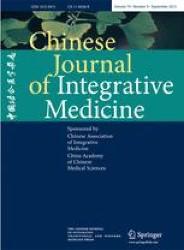
Pregnancy Benefit of Acupuncture on in vitro Fertilization: A Systematic Review and Meta-Analysis
2023 Oct 10 Chinese Journal of Integrative Medicine Zhang H, Zhang C, Ma P, Sun C, Sun C, Liu X, et al.
Systematic Review Meta-AnalysisAcupuncture may have a positive impact on clinical pregnancy rate and live birth rate in women undergoing in vitro fertilization (IVF), although the results are limited by the heterogeneity of the current evidence.

Traditional Chinese medicine for frozen shoulder: An evidence‐based guideline
2023 Apr 05 Journal of Evidence-Based Medicine Qin X, Sun K, Ao Y, Liu J, Wang M, Deng Q, et al.
Practice GuidelineGuidelines have been developed for treating frozen shoulder using traditional Chinese medicine, with multiple therapies such as acupuncture and exercise recommended.
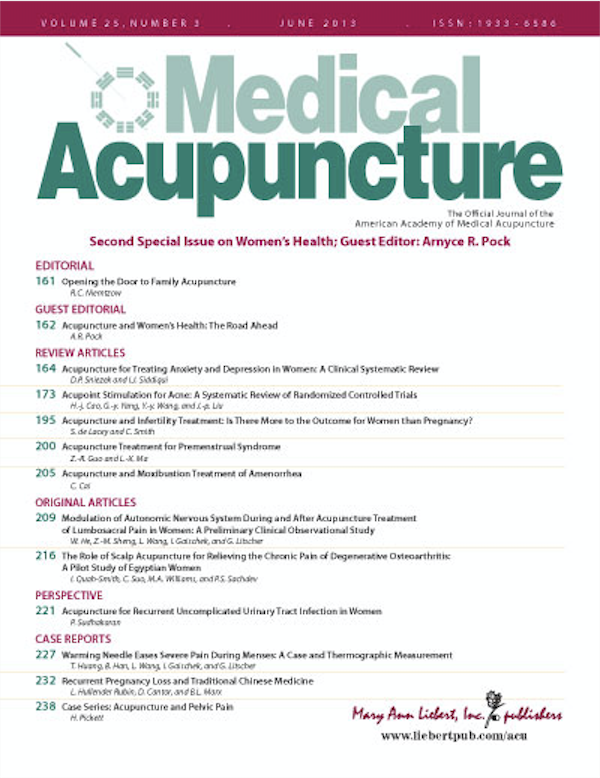
Acupuncture for Plantar Fasciopathy: A Randomized Controlled Trial
2023 Feb 01 Medical Acupuncture Cagle SD, Covey C, Farrell J, Sharon DJ, Crawford P
Randomised Controlled TrialAcupuncture combined with a home-exercise program significantly reduces pain in patients suffering from plantar fasciopathy more than just a home exercise program.

Current Research on Complementary and Alternative Medicine in the Treatment of Premature Ovarian Failure: An Update Review
2022 Jun 23 Evidence-Based Complementary and Alternative Medicine Li Y, Yan MY, Chen QC, Xie YY, Li CY, Han FJ
In recent years, clinical and scientific researchers have paid more attention to POF and its associated symptoms such as amenorrhea and infertility. As the research has progressed, more and more CAM therapies have become widely accepted and well used, including herbal medicine, acupuncture, psychology, exercise, vitamins, massage, diet, etc. These therapies can significantly improve the patient's symptoms and hormone levels and can be used in combination with other treatments to enhance their efficacy.
Review Article Complementary Medicine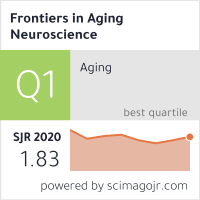
Traditional Chinese Medicine and Sarcopenia: A Systematic Review
2022 May 13 Frontiers in Aging Neuroscience Guo C, Ma Y, Liu S, Zhu R, Xu X, Li Z, et al.
This systematic review showed that traditional Chinese Qigong exercises and Chinese herbal medicine have a positive and important effect on physical performance and muscle strength in older adults with sarcopenia.
Systematic ReviewResearch insights are moderated by the Research Hub team and offer an at-a-glance overview of interesting research findings.

2023 Chinese Journal of Integrative Medicine
Acupuncture may have a positive impact on clinical pregnancy rate and live birth rate in women undergoing in vitro fertilization (IVF), although the results are limited by the heterogeneity of the current evidence.
Systematic Review
Pregnancy Benefit of Acupuncture on in vitro Fertilization: A Systematic Review and Meta-Analysis
Zhang H, Zhang C, Ma P, Sun C, Sun C, Liu X, et al.

2023 Journal of Evidence-Based Medicine
Guidelines have been developed for treating frozen shoulder using traditional Chinese medicine, with multiple therapies such as acupuncture and exercise recommended.
Practice Guideline
Traditional Chinese medicine for frozen shoulder: An evidence‐based guideline
Qin X, Sun K, Ao Y, Liu J, Wang M, Deng Q, et al.

2023 Medical Acupuncture
Acupuncture combined with a home-exercise program significantly reduces pain in patients suffering from plantar fasciopathy more than just a home exercise program.
Randomised Controlled Trial
Acupuncture for Plantar Fasciopathy: A Randomized Controlled Trial
Cagle SD, Covey C, Farrell J, Sharon DJ, Crawford P
2022 Scandinavian Journal of Medicine & Science in Sports
Cherry juice, when consumed several days before exercise, hastens muscle function recovery post-exercise, making it a valuable 'precovery' intervention.
Review Article Cherry
“Precovery” versus recovery: Understanding the role of cherry juice in exercise recovery
McHugh MP
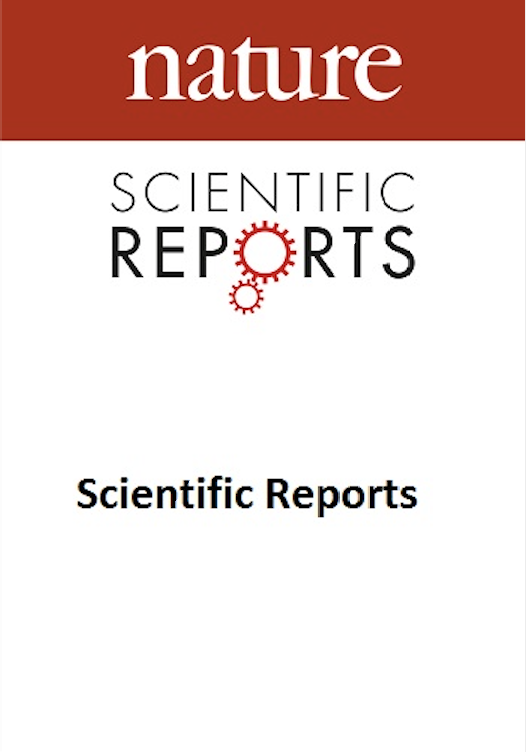
2022 Scientific Reports
Iron deficiency promotes a shift towards a more glycolytic metabolism, without detectable effect on mitochondrial bioenergetics, which can be corrected with iron supplements.
Experimental Study Iron Deficiency Skeletal Muscle
Abnormal whole-body energy metabolism in iron-deficient humans despite preserved skeletal muscle oxidative phosphorylation
Frise MC, Holdsworth DA, Johnson AW, Chung YJ, Curtis MK, Cox PJ, et al.
Review Articles
Review articles summarise and critically evaluate the current state of research on a specific topic or field by synthesising multiple primary research studies.

Pregnancy Benefit of Acupuncture on in vitro Fertilization: A Systematic Review and Meta-Analysis
2023 Oct 10 Chinese Journal of Integrative Medicine Zhang H, Zhang C, Ma P, Sun C, Sun C, Liu X, et al.
Systematic Review Meta-AnalysisAcupuncture may have a positive impact on clinical pregnancy rate and live birth rate in women undergoing in vitro fertilization (IVF), although the results are limited by the heterogeneity of the current evidence.
Review(s) Completed, Editorial Evaluation Pending, as of 20 Oct 2021. —Ve-Vinn L 22 Oct 2021

Current Research on Complementary and Alternative Medicine in the Treatment of Premature Ovarian Failure: An Update Review
2022 Jun 23 Evidence-Based Complementary and Alternative Medicine Li Y, Yan MY, Chen QC, Xie YY, Li CY, Han FJ
In recent years, clinical and scientific researchers have paid more attention to POF and its associated symptoms such as amenorrhea and infertility. As the research has progressed, more and more CAM therapies have become widely accepted and well used, including herbal medicine, acupuncture, psychology, exercise, vitamins, massage, diet, etc. These therapies can significantly improve the patient's symptoms and hormone levels and can be used in combination with other treatments to enhance their efficacy.
Review Article Complementary Medicine
Traditional Chinese Medicine and Sarcopenia: A Systematic Review
2022 May 13 Frontiers in Aging Neuroscience Guo C, Ma Y, Liu S, Zhu R, Xu X, Li Z, et al.
This systematic review showed that traditional Chinese Qigong exercises and Chinese herbal medicine have a positive and important effect on physical performance and muscle strength in older adults with sarcopenia.
Systematic Review“Precovery” versus recovery: Understanding the role of cherry juice in exercise recovery
2022 Feb 14 Scandinavian Journal of Medicine & Science in Sports McHugh MP
Review Article Exercise CherryCherry juice, when consumed several days before exercise, hastens muscle function recovery post-exercise, making it a valuable 'precovery' intervention.

Health Benefits of Coconut Water
2022 Jan Reference Series in Phytochemistry Rethinam P, Krishnakumar V
Review Article Osteoporosis Cardiovascular DiseaseCoconut water possesses unique compound profiles that imbue it with a broad spectrum of medical properties, incorporating aspects of nutrition, pharmacology, and disease prevention.
Clinical Trials
Clinical trials are research studies that involve people and are conducted to evaluate the safety and efficacy of new treatments or interventions, such as drugs, medical devices, or behavioural therapies.

Acupuncture for Plantar Fasciopathy: A Randomized Controlled Trial
2023 Feb 01 Medical Acupuncture Cagle SD, Covey C, Farrell J, Sharon DJ, Crawford P
Randomised Controlled TrialAcupuncture combined with a home-exercise program significantly reduces pain in patients suffering from plantar fasciopathy more than just a home exercise program.
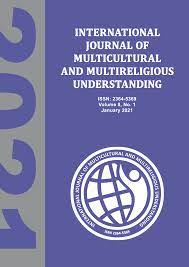
The Effect of Combined Exercise with Coffee Consumption on Fasting Blood Sugar Levels and Abdominal Obesity in Overweight Middle-aged Prediabetic Men
2021 Jul 28 International Journal of Multicultural and Multireligious Understanding Taheri AR, Talebi N
Randomised Controlled Trial Blood SugarCombined exercise and coffee consumption significantly reduce fasting blood sugar and abdominal obesity in middle-aged, pre-diabetic men.
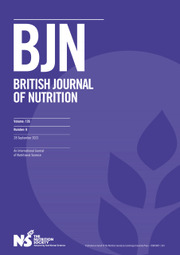
Effects of L-citrulline supplementation on nitric oxide and antioxidant markers after high-intensity interval exercise in young men: a randomized controlled trial
2021 Jun 17 British Journal of Nutrition Valaei K, Mehrabani J, Wong A.
Our data indicate that L-Cit supplementation (single 12 g dose pre-exercise) induces improvements in antioxidant markers following a session of high-intensity interval exercise in young men.
Randomised Controlled Trial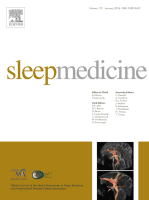
Alternative treatment of restless legs syndrome: an overview of the evidence for mind-body interventions, lifestyle interventions, and neutraceuticals
2020 Jan Sleep Medicine Bega D & Malkani R
Insufficient evidence exists for yoga, acupuncture, PCDs, near-infrared light therapy, CBT, valerian, or Chinese herbs, but preliminary studies on each of these suggest that high-quality randomized controlled trials may be warranted to support and verify the data presented.
Randomised Controlled Trial Restless Legs Syndrome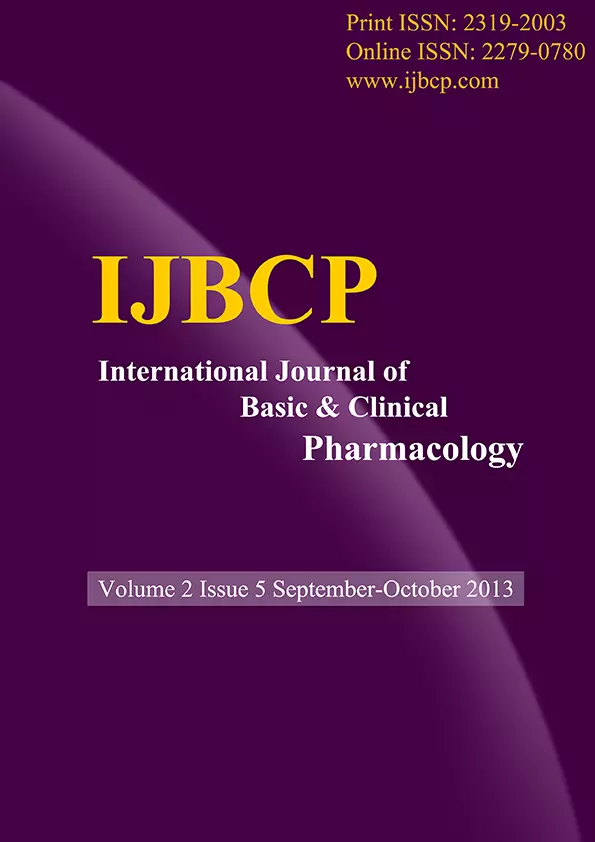
Beneficial role of Avocado oil orally used in Osteoarthritis: experience in a tertiary care hospital of Bihar, India
2019 May 23 International Journal of Basic & Clinical Pharmacology Chandra A, Kumar A, Kumar M, Kumar M, Dikshit H
Randomised Controlled Trial Avocado OilAvocado oil supplement combined with exercise improves joint function in osteoarthritis over traditional treatments like NSAIDS and multivitamins with exercise.
Study Protocols
Published study protocols are detailed plans that outline the objectives, methodology, statistical analyses, and organisation of a research study that have been made publicly available for others to review and use as a reference.
Presentation Slides

Systematic Review
Acupuncture may have a positive impact on clinical pregnancy rate and live birth rate in women undergoing in vitro fertilization (IVF), although the results are limited by the heterogeneity of the current evidence.
Zhang H, Zhang C, Ma P, Sun C, Sun C, Liu X, Pu Z, Lin Y, Liu B, Liu C, Yan S

Practice Guideline
Guidelines have been developed for treating frozen shoulder using traditional Chinese medicine, with multiple therapies such as acupuncture and exercise recommended.
Qin X, Sun K, Ao Y, Liu J, Wang M, Deng Q, Zhong W, liu J, Sun S, Liu X, Shi B, Guan X, Du S, Zou J, Wu C, Chen F, Fang Y, Nie X, Mo W, Guo J, Zhang Y, Dong Y, Wei X, Zhu L

Randomised Controlled Trial
Acupuncture combined with a home-exercise program significantly reduces pain in patients suffering from plantar fasciopathy more than just a home exercise program.
Cagle SD, Covey C, Farrell J, Sharon DJ, Crawford P

Review Article
Cherry juice, when consumed several days before exercise, hastens muscle function recovery post-exercise, making it a valuable 'precovery' intervention.
McHugh MP

Experimental Study
Iron deficiency promotes a shift towards a more glycolytic metabolism, without detectable effect on mitochondrial bioenergetics, which can be corrected with iron supplements.
Frise MC, Holdsworth DA, Johnson AW, Chung YJ, Curtis MK, Cox PJ, Clarke K, Tyler DJ, Roberts DJ, Ratcliffe PJ, Dorrington KL, Robbins PA

Review Article
Coconut water possesses unique compound profiles that imbue it with a broad spectrum of medical properties, incorporating aspects of nutrition, pharmacology, and disease prevention.
Rethinam P, Krishnakumar V

Randomised Controlled Trial
Combined exercise and coffee consumption significantly reduce fasting blood sugar and abdominal obesity in middle-aged, pre-diabetic men.
Taheri AR, Talebi N
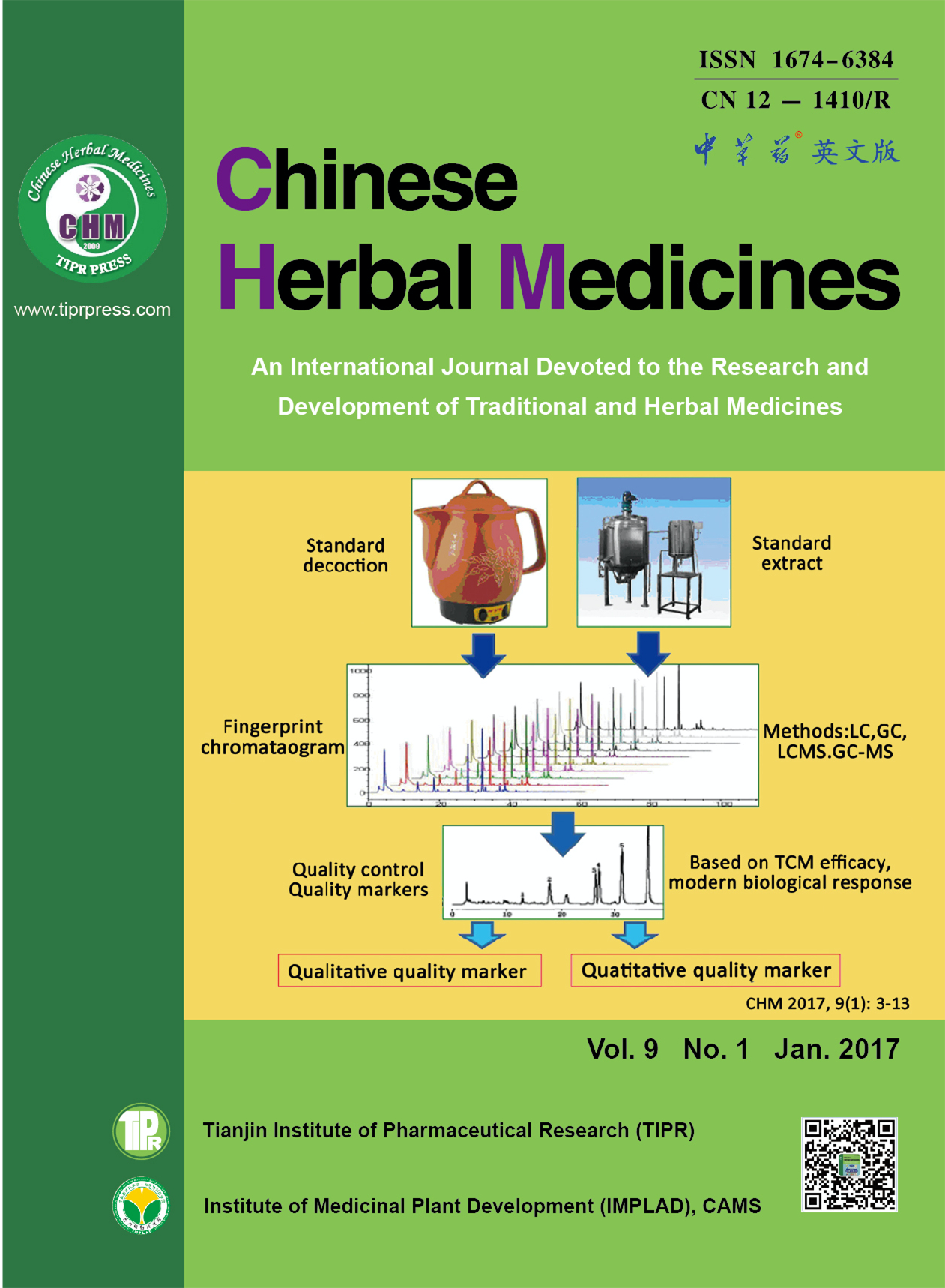
Network Pharmacology
Honeysuckle extract could provoke anaphylaxis and specific ingredients in honeysuckle potentially trigger this reaction.
Feng Y, Qin G, Jing Z, Wang Y, Zhou Y
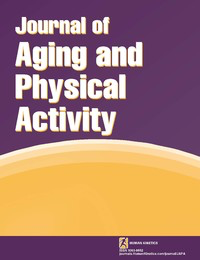
Systematic Review
High-quality evidence suggests that Tai Chi is an effective intervention for preventing falls in community settings, and through its benefits on cognitive functioning.
Nyman SR

Systematic Review
Tai Chi has potential clinical value for treating many diseases, especially noncommunicable chronic diseases. The most common diseases were in the musculoskeletal system or connective tissue and the circulatory system.
Huang J, Wang D, Wang J

Review Article
Isoflavones, mainly found in soy-derived products, show beneficial effects on bone health, potential cancer risk reduction, and alleviation of menopausal symptoms, but not on cardiovascular risk.
Gómez-Zorita S, González-Arceo M, Fernández-Quintela A, Eseberri I, Trepiana J, Portillo MP
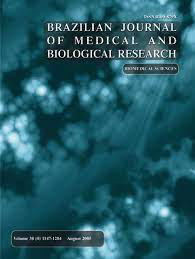
Systematic Review
Tai chi may be an exercise option for older adults, with a positive effect on overall quality of life and physical component.
Wang D, Wang P, Lan K, Zhang Y, Pan Y.
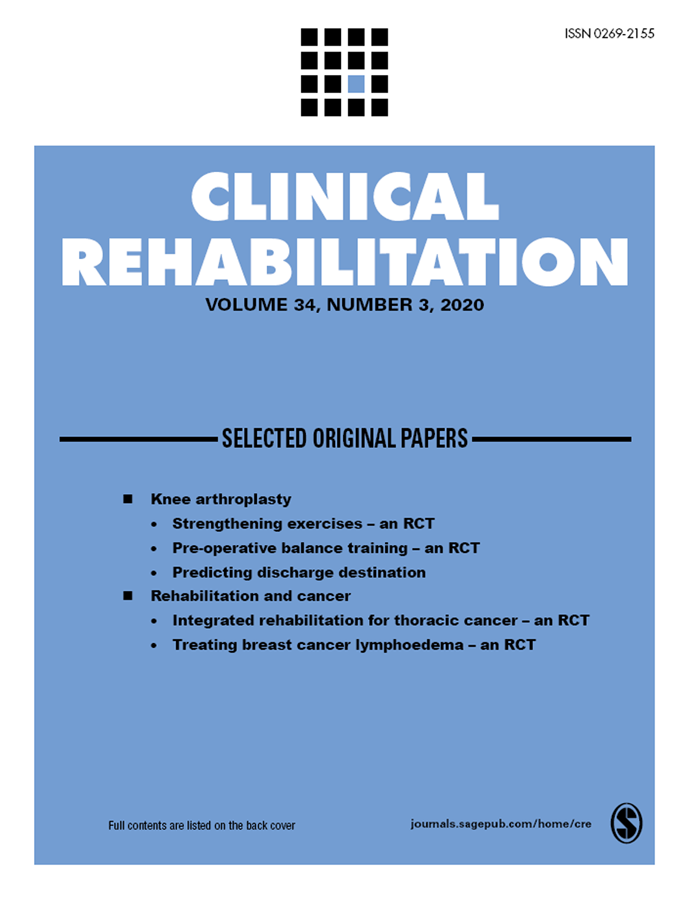
Systematic Review
Tai Chi exercise was beneficial for ameliorating physical and mental health of patients with knee osteoarthritis and should be available as an alternative non-pharmacological therapy in rehabilitation programmes.
Hu L, Wang Y, Liu X, Ji X, Ma Y, Man S, Hu Z, Cheng J, Huang F.
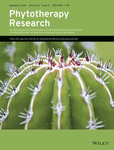
Systematic Review
Green tea intake can significantly reduce body weight, body mass index and waist circumference, with the greatest effect seen with lower dosages and shorter treatment durations.
Lin Y, Shi D, Su B, Wei J, Găman MA, Sedanur Macit M, Borges do Nascimento IJ, Guimaraes NS
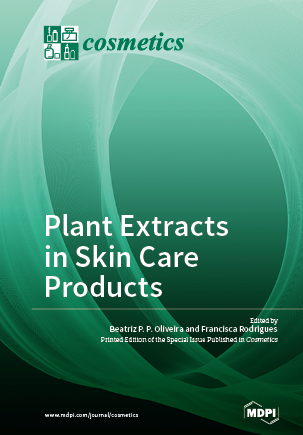
Review Article
Both facial acupuncture and facial exercises have the potential to improve the skin laxity, wrinkle length, muscle thickness, and pigmentary changes associated with aging.
M. Smith, A. Ferris, T. K. Nahar, V. Sharma, M.
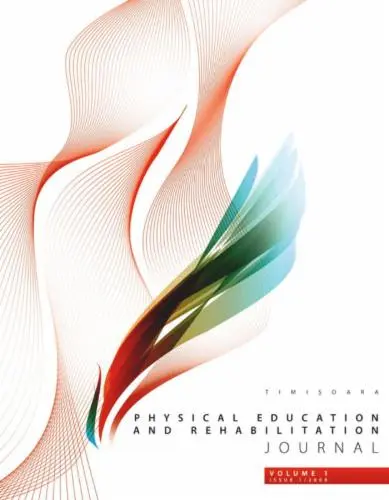
Systematic Review
The results of manual, traditional and non-invasive therapies are similar to those of surgical treatments, and even better in a very large number of cases.
Glazer C, Pantea C

Systematic Review
Acupuncture is effective in the intervention of overweight/obesity in Asians.
Yao J, He Z, Chen Y, Xu M, Shi Y, Zhang L, Li Y.

Review Article
Honey, comprising mainly carbohydrates, particularly fructose and glucose, demonstrates potential performance benefits and immunological advantages when consumed around exercise, suggesting a role in exercise nutrition.
Hills , Mitchell , Wells , Russell

Randomised Controlled Trial
Avocado oil supplement combined with exercise improves joint function in osteoarthritis over traditional treatments like NSAIDS and multivitamins with exercise.
Chandra A, Kumar A, Kumar M, Kumar M, Dikshit H

Experimental Study
Danggui Buxue Tang (DBT) supplement helps reduce running times and control exercise-induced hepcidin levels, boosting iron levels and speeding up iron balance during recovery.
Chang CW, Chen CY, Yen CC, Wu YT, Hsu MC
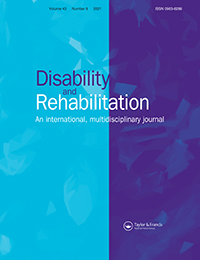
Systematic Review
Standard acupuncture was significantly more effective for restless legs syndrome severity than control conditions.
Harrison EG, Keating JL, Morgan PE.

Systematic Review
Acupuncture has similar efficacy compared to pharmacotherapies for acne vulgaris, however acupuncture interventions reported less adverse effects and may be a treatment option.
Mansu SSY, Liang H, Parker S, Coyle ME, Wang K, Zhang AL, Guo X, Lu C, Xue CCL
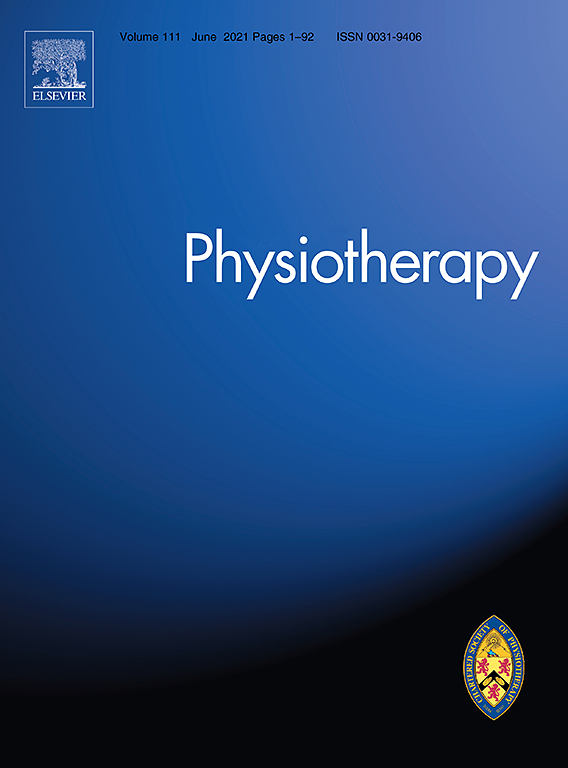
Systematic Review
Acupuncture combined with physiotherapy or exercise was found to be more effective for frozen shoulder than physiotherapy or exercise alone in the short and long term.
A. Rubio M. Mansfield J. Lewis
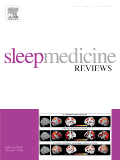
Systematic Review
The severity of primary restless legs syndrome symptoms can be significantly ameliorated by acupuncture.
Xu XM, Liu Y, Jia SY, Dong MX, Cao D, Wei YD.
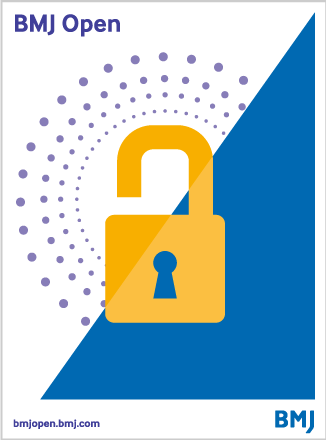
Systematic Review
Tai Chi is effective for preventing falls in older adults and the preventive effect is likely to increase with exercise frequency.
Huang ZG, Feng YH, Li YH, Lv CS
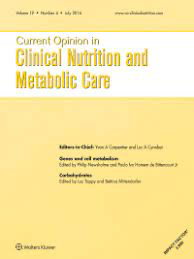
Review Article
Recent studies have shown that chronic L-citrulline supplementation increases nitric oxide synthesis, decreases blood pressure, and may increase peripheral blood flow.
Figueroa A, Wong A, Jaime SJ, Gonzales JU.
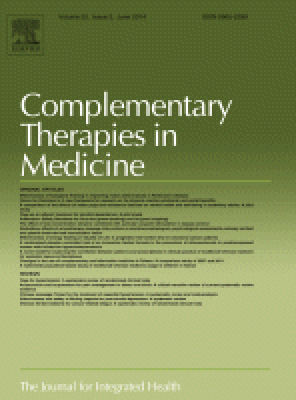
Systematic Review
Bu Zhong Yi Qi Tang treatment improves clinical symptoms, exercise capacity, lung function and quality of life for patients with stable chronic obstructive pulmonary disease.
Yuanbin Chen, Johannah Linda Shergis, Lei Wu, Xuhua Yu, Qigang Zeng, Yinji Xu, Xinfeng Guo, Anthony Lin Zhang, Charlie Changli Xue, Lin Lin

Systematic Review
Clinicians may consider Tai Chi as a viable complementary and alternative medicine for chronic pain conditions.
Kong, L., Lauche, R., Klose, P. et al.

Clinical Study
Powdered tart cherry supplementation surrounding endurance exercise can decrease muscle damage markers, inflammation, oxidative stress and muscle soreness, while improving performance.
Levers K, Dalton R, Galvan E, O’Connor A, Goodenough C, Simbo S, Mertens-Talcott SU, Rasmussen C, Greenwood M, Riechman S, Crouse S, Kreider RB

Clinical Study
Taking a powdered tart cherry supplement before and after intense resistance exercise can decrease muscle soreness, recovery strength loss, and signs of muscle damage.
Levers K, Dalton R, Galvan E, Goodenough C, O’Connor A, Simbo S, Barringer N, Mertens-Talcott SU, Rasmussen C, Greenwood M, Riechman S, Crouse S, Kreider RB

Systematic Review
There is moderate‐quality evidence from individual studies suggesting that acupuncture improved pelvic pain more than usual prenatal care.
Liddle SD, Pennick V
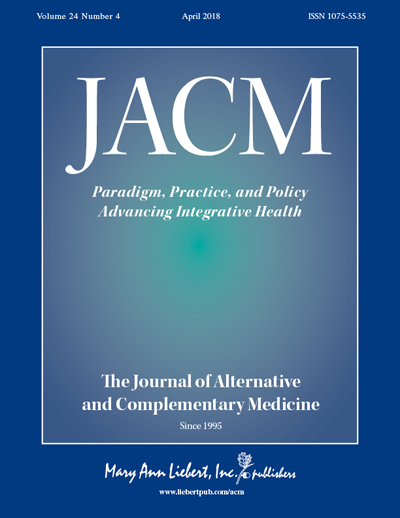
Systematic Review
Acupuncture combined with exercise is effective for shoulder pain after stroke.
Jung Ah Lee, Si-Woon Park, Pil Woo Hwang, Sung Min Lim, Sejeong Kook, Kyung In Choi, and Kyoung Sook Kang.
Executive Summary
Write an executive summary in the form of a blog article on the topic of "Research into Chinese medicine treatment for Exercise" summarising the research below and using language that can be easily understood by patients and avoiding medical jargon using a professional and caring tone of voice.
Write an executive summary in the form of a blog article on the topic of "Researched Chinese medicine treatments for Exercise" summarising the research below in an objective and easy to understand way, and using language that can be easily understood by patients. Group the article into Chinese medicine treatments first, followed by nutrition and other treatments. Avoid using medical jargon and use a professional and caring tone of voice.
Write me a concise but easy to understand executive summary on the topic of "Chinese medicine treatments for Exercise" based on the following research that I will give you. Your summary should be 2 paragraphs long in Australian English spelling and include references to the studies.
A Systematic Review published in 2023 in the journal Chinese Journal of Integrative Medicine found that Acupuncture may have a positive impact on clinical pregnancy rate and live birth rate in women undergoing in vitro fertilization (IVF), although the results are limited by the heterogeneity of the current evidence. This study aimed to assess the efficacy of acupuncture on embryo transfer in women undergoing in vitro fertilization (IVF). A total of 49 randomized controlled trials (RCTs) involving 9422 women were analyzed. The results indicated that acupuncture had a significant positive impact on the clinical pregnancy rate (CPR) and live birth rate (LBR) compared to the control groups (odds ratio [OR]=1.65 for CPR, 1.34 for LBR). Subgroup analyses showed that traditional acupuncture was more beneficial for women aged < 35 years, those receiving ≥ 3 sessions, and those with lower baseline CPR rates in the control group. However, significant heterogeneity was observed among the studies. In conclusion, while there were some benefits of acupuncture in improving CPR and LBR in IVF, the results should be interpreted with caution due to the variability in the current evidence.
A Practice Guideline published in 2023 in the journal Journal of Evidence-Based Medicine found that Guidelines have been developed for treating frozen shoulder using traditional Chinese medicine, with multiple therapies such as acupuncture and exercise recommended. The development of evidence-based guidelines followed internationally recognized standards and used the Grading of Recommendations Assessment, Development and Evaluation approach to determine the certainty of evidence and the strength of recommendations. A multidisciplinary group formed the development panel, who took into account benefits, harms, availability of resources, accessibility, and other factors. Nine clinical queries were defined after conducting a systematic literature review and a face-to-face meeting. The guideline panel reached a consensus on twelve recommendations which included treatments like manual therapy, acupuncture, needle knife, Cheezheng Xiaotong plaster, Gutong plaster, exercise therapy and an integrated approach of traditional Chinese medicine and Western medicine. Their strength ranged from weakly recommended to consensus based. This new guideline targets clinicians and health administrators.
A Randomised Controlled Trial published in 2023 in the journal Medical Acupuncture found that Acupuncture combined with a home-exercise program significantly reduces pain in patients suffering from plantar fasciopathy more than just a home exercise program. A randomized controlled trial was set up at two U.S. Air Force military treatment facilities using subjects over 18 years old suffering from plantar fasciopathy. In total, 94 subjects were divided into two groups; those who only did home exercises and those who did home exercises and received acupuncture. The intervention group got acupuncture every other week, four times in total. There was no blinding and after an initial 12-week study, patients in the control group were given an option to cross over to acupuncture. The main focus of the trial outcomes was on reduction of pain and improved functioning, with scores taken at baseline, every visit, and six weeks after treatment. The outcome revealed that the control group had a notable reduction in pain at the end of the study, the intervention group had over a 50% reduction in pain immediately after every acupuncture session and a sustained reduction in pain at the termination of the study. In addition, subjects who crossed over to acupuncture from the control group observed a considerable drop in their pain scores instantly as well as at the 12 weeks post-acupuncture point. However, while function scores did enhance, there was no significant statistical difference.
A Review Article published in 2022 in the journal Scandinavian Journal of Medicine & Science in Sports found that Cherry juice, when consumed several days before exercise, hastens muscle function recovery post-exercise, making it a valuable 'precovery' intervention. The review sourced data from fifteen studies that involved differing procedures for tart cherry juice intake in relation to exercise, and their impacts on muscle function, inflammation, and soreness after working out. Various forms of cherry products were investigated such as concentrated juice, juice from fresh-frozen cherries, tart cherry concentrate gel, and tart cherry powder. While the specific dosages varied depending on the type of cherry product, the timing of the dosing regimen emerged as a vital factor. Studies consistently reveal faster muscle function recovery post-exercise if the juice is ingested for numerous days preceding the exercise. The impact on soreness, inflammation, and the effectiveness of starting the regimen on the day of, or post-exercise remain mixed and unclear. Notably, tart cherry powder failed to boost any recovery metric in the after-workout days. The findings advocate for using the term "precovery" for interventions that begin prior to the exercise to assist in recovery post-exercise. Among a variety of athletic activities, cherry juice demonstrates its merit as an effective precovery beverage.
A Experimental Study published in 2022 in the journal Scientific Reports found that Iron deficiency promotes a shift towards a more glycolytic metabolism, without detectable effect on mitochondrial bioenergetics, which can be corrected with iron supplements. The methodology of this prospective, case-control, clinical physiology study involved two series of testing. Thirteen iron-deficient individuals and thirteen iron-replete control participants were chosen for the study, and they underwent P-magnetic resonance spectroscopy of their exercising calf muscles to investigate the differences in oxidative phosphorylation. This testing was followed by a whole-body cardiopulmonary exercise test. After these assessments, individuals were given an intravenous infusion, which was randomised to be either iron or saline. The results showed no significant influence of either baseline iron levels or the intravenous iron infusion on the high-energy phosphate metabolism. In the case of submaximal cardiopulmonary exercise, the rate of decline in blood lactate concentration was slower for the iron deficient group, which shows signs of abnormal energy metabolism on a whole-body level. Remarkably, this anomaly was corrected after an intravenous iron infusion. Furthermore, the intravenous iron also increased the lactate threshold during maximal cardiopulmonary exercise by around 10%, no matter what the baseline iron status of the individual was.
A Review Article published in 2022 in the journal Reference Series in Phytochemistry found that Coconut water possesses unique compound profiles that imbue it with a broad spectrum of medical properties, incorporating aspects of nutrition, pharmacology, and disease prevention. The study utilized comprehensive analysis to assess the chemical profile of coconut water, identifying a range of components including phytohormones, enzymes, antioxidant compounds, vitamins, minerals, and phenolic compounds. These components are known to contribute to the water's biological activity and pharmacological effects, thereby enabling a raft of medicinal properties inherent to coconut water. The water was found to feature anti-microbial, anti-bacterial, anti-inflammatory, anti-hypertensive, rejuvenating, hepatoprotective, hypolipidemic, and diuretic properties. An examination of the therapeutic effects of coconut water revealed a significant impact on gastric dysfunction, dysentery, and child malnutrition alongside notable capabilities to manage hypertension. The water was found to promote exercise performance, reduce swelling, dissolve kidney stones, improve kidney function, improve digestion, relieve constipation, reduce the risk of heart disease, lower high blood pressure, and improve cholesterol levels. Consumption of tender coconut water was specifically found to reduce the risk of heart disease, help prevent Alzheimer’s disease pathologies and prevent osteoporosis in experimental animals. The unique nutritional profile of coconut water was also found to provide it with the capacity to balance body chemistry and fight cancer.
A Randomised Controlled Trial published in 2021 in the journal International Journal of Multicultural and Multireligious Understanding found that Combined exercise and coffee consumption significantly reduce fasting blood sugar and abdominal obesity in middle-aged, pre-diabetic men. In the study, 44 overweight, middle-aged pre-diabetic men were purposefully selected and divided into four groups: The Exercise Combination group, the Coffee Consumption group, the Combined Exercise + Coffee Consumption group, and the Control group. Prior to and following the experiment, measurements such as weight, body mass index, and percentage of fasting fat were recorded. The exercise groups were subjected to a training protocol for 8 weeks, which involved three, 90 minute sessions every week. Concurrently, the Coffee and the Exercise + Coffee group consumed 10 grams of coffee every alternate day. The data were processed using a covariance test. The results clearly indicated a substantial decrease in the body mass index, fat percentage, and serum concentration of fasting blood glucose in the exercise groups in comparison to the Control group. The study demonstrated that, for pre-diabetic men, a combination of exercise with coffee may effectively manage fasting blood sugar and abdominal obesity.
A Network Pharmacology published in 2021 in the journal Chinese Herbal Medicines found that Honeysuckle extract could provoke anaphylaxis and specific ingredients in honeysuckle potentially trigger this reaction. In the methodology, rat peritoneal mast cells were separated and purified, then incubated with a compound, saline, and honeysuckle extract at 37°C for varying time intervals. Cell degranulation was observed under microscopes, and the percentage of Annexin V positive cells, which reflect cell degranulation rate, was detected via flow cytometry. Rats were given honeysuckle extract injections, and afterward, symptoms, histamine, and tryptase levels were analysed to study the anaphylaxis effect. In the discussion of results, it was discovered that the percentage of Annexin V positive cells and cell degranulation ratio significantly rose in cells treated with honeysuckle extract. Histamine and tryptase levels also increased noticeably after injection of honeysuckle extract. Regression analysis identified certain peaks as potential anaphylactoid ingredients, indicating that honeysuckle could induce anaphylaxis and there were likely specific substances in honeysuckle that caused this reaction.
A Systematic Review published in 2021 in the journal Journal of Aging and Physical Activity found that High-quality evidence suggests that Tai Chi is an effective intervention for preventing falls in community settings, and through its benefits on cognitive functioning. Tai Chi can be highly effective for preventing falls. Tai Chi is a safe and accessible form of exercise. Indeed, over 500 trials and 120 systematic reviews have been conducted on the health benefits of Tai Chi and no studies have found that Tai Chi worsens a condition (Huston & McFarlane, 2016). In addition, a systematic review of adverse event reporting from Tai Chi trials found Tai Chi is unlikely to result in serious adverse events but may result in minor musculoskeletal aches and pains (Wayne, Berkowitz, Litrownik, Buring, & Yeh, 2014). For older adults with osteoporosis with vertebral fractures, it is recommended that they first receive advice on spine sparing techniques and that they avoid repetitive, weighted, or rapid end range flexion or extension of the spine (Skelton & Mavroeidi, 2018). Frailer older adults, those with a high falls risk or multiple comorbid conditions affecting balance or strength, are recommended to only practice Tai Chi under the supervision of an instructor trained in adapting and tailoring the exercise prescription (Skelton & Mavroeidi, 2018).
A Systematic Review published in 2021 in the journal Evidence-Based Complementary and Alternative Medicine found that Tai Chi has potential clinical value for treating many diseases, especially noncommunicable chronic diseases. The most common diseases were in the musculoskeletal system or connective tissue and the circulatory system. Tai Chi exercise has been widely regarded as an effective method for health promotion, adjuvant treatment for chronic diseases, and a form of rehabilitation therapy during the recovery period from diseases. In this systematic review, the effects of Tai Chi on improving health-related parameters in both healthy populations and diseased populations were examined comprehensively. A total of 139 RCTs were included in this systematic review; 44 studies focused on the effects of Tai Chi on the physical function, cognitive function, quality of life, balance ability, and psychological indicators in healthy middle-aged and elderly people and the effects of Tai Chi in preventing falls. Besides, 95 studies focused on the effects of Tai Chi on different diseases. We have summarized several styles of Tai Chi interventions and their uses in the treatment of various diseases. Tai Chi has potential clinical value for treating many diseases, especially noncommunicable chronic diseases. The most common diseases were in the musculoskeletal system or connective tissue and the circulatory system. This may be due to the physiological and biomechanical that are influenced by Tai Chi training.
A Review Article published in 2020 in the journal Nutrients found that Isoflavones, mainly found in soy-derived products, show beneficial effects on bone health, potential cancer risk reduction, and alleviation of menopausal symptoms, but not on cardiovascular risk. The study examined the potential uses of isoflavones, phenolic compounds mostly found in soy-derived foods and several vegetables. Isoflavones are seen as potential alternative therapies for hormone-dependent disorders due to their near-identical chemical structure to estradiol. These disorders include certain cancers, cardiovascular diseases, and menopausal symptoms. The investigation involved reviewing existing scientific evidence to evaluate the potential effects of isoflavones on these diseases and health concerns. In assessing the results, the review found evidence suggesting that isoflavones could have a beneficial effect on postmenopausal women's bone health, contributing to osteoporosis prevention and treatment. However, observed study results were not entirely conclusive due to discrepancies among study designs. Contrarily, there appeared to be no significant protective effect against cardiovascular risk with soy isoflavones. In terms of cancer, preliminary observations suggested that isoflavones may reduce some types of cancer risks, such as breast and endometrial cancer. Lastly, isoflavones showed a potential role in reducing hot flushes associated with menopause. Concerning safety, most common adverse effects were mild and observed at the gastrointestinal level.
A Systematic Review published in 2020 in the journal Brazilian Journal of Medical and Biological Research found that Tai chi may be an exercise option for older adults, with a positive effect on overall quality of life and physical component. Tai chi exercise is a safe, economical, and beneficial exercise that is easy to learn. According to this systematic review, Tai chi exercise can be considered a sport to improve the QoL of older adults. However, before recommending Tai chi exercise, healthcare professionals should make different recommendations based on the situation and diagnosis of older adults. Future randomized controlled trials should provide more rigorous research procedures, in particular measures to reduce bias, so that more accurate assessments of quality and intervention effectiveness can be achieved.
A Systematic Review published in 2020 in the journal Clinical Rehabilitation found that Tai Chi exercise was beneficial for ameliorating physical and mental health of patients with knee osteoarthritis and should be available as an alternative non-pharmacological therapy in rehabilitation programmes. A total of 16 RCTs involving 986 patients with knee osteoarthritis met the established inclusion criteria. The strength of evidence for the main outcomes was low or moderate. The systematic review illustrated the efficacy of Tai Chi exercise in treating and managing knee osteoarthritis. Patients’ outcomes practising Tai Chi exercise were improved significantly, including pain, stiffness, physical function, dynamic balance, physiological and psychological health. No adverse events associated with Tai Chi exercise were reported.
A Systematic Review published in 2020 in the journal Phytotherapy Research found that Green tea intake can significantly reduce body weight, body mass index and waist circumference, with the greatest effect seen with lower dosages and shorter treatment durations. In the methodology used for this study, several databases were exhaustively searched from their inception to September 2019. The goal was to identify clinical trials that had explored the influence of green tea supplements on obesity indices in humans. The dosage, type of extract, and duration of the intervention were key factors for the study. The study design incorporated the use of a random-effects model to aggregate the collected data. In terms of the study's results, they demonstrated notable changes in subjects' obesity indices following the administration of green tea. A significant reduction in body weight and body mass index was observed, which was consistent across all extracted data. The most noticeable change was observed in the reduction of waist circumference in subjects who were administered an equivalent of 800 mg/day of green tea. Also, a more significant reduction in body weight occurred with a green tea dosage of less than 500 mg/day and a treatment duration of 12 weeks. These results affirm the potential use of green tea in improving obesity indices and the study advocates for the inclusion of green tea supplements, combined with a balanced diet and regular exercise, in obesity management strategies.
A Review Article published in 2020 in the journal Cosmetics found that Both facial acupuncture and facial exercises have the potential to improve the skin laxity, wrinkle length, muscle thickness, and pigmentary changes associated with aging. While injectables, lasers, and surgical interventions have traditionally been used to reverse the changes associated with facial aging, other alternative therapies such as facial acupuncture and facial exercises are now being studied for facial rejuvenation. In this paper, we both summarize the concepts of facial acupuncture and facial exercises, and review seven studies that evaluate the efficacy of these modalities. Data from these studies suggest that both facial acupuncture and facial exercises have the potential to improve the skin laxity, wrinkle length, muscle thickness, and pigmentary changes associated with aging. Patients frequently reported improvement and experienced very few side effects. However, further research is necessary before these modalities are widely accepted as effective by the medical community, though the results of these studies may ultimately make providers less hesitant when patients seek out these services.
A Systematic Review published in 2019 in the journal Timisoara Physical Education and Rehabilitation Journal found that The results of manual, traditional and non-invasive therapies are similar to those of surgical treatments, and even better in a very large number of cases. In the current context of medicine and therapy, statistics indicate a tendency to approach the carpal tunnel syndrome by surgical treatment, to the detriment of approaching the pathology through a non-invasive technique. The relevant specialized articles selected for this study, and published in the past 10 years, prove that alternative medicine, physical therapy, electrotherapy, and the natural evolution of untreated patients or of patients exposed to the placebo effect, may significantly improve the symptoms of the carpal tunnel syndrome.
A Systematic Review published in 2019 in the journal Medicine found that Acupuncture is effective in the intervention of overweight/obesity in Asians. Our meta-analysis demonstrated that acupuncture was effective as an intervention for overweight/obesity in Asians; however, relative to exercise alone, acupuncture plus exercise had no effect on the change of BMI or waist circumstance. The evidence is weak due to the low quality of the included studies. Long-term, high-quality studies are needed to evaluate the efficacy of acupuncture for weight loss.
A Review Article published in 2019 in the journal Nutrients found that Honey, comprising mainly carbohydrates, particularly fructose and glucose, demonstrates potential performance benefits and immunological advantages when consumed around exercise, suggesting a role in exercise nutrition. This review assessed nine articles, extracted from 273 results of online database searches (PubMed, MEDLINE, SPORTDiscus), focusing on the effects of honey consumption combined with exercise in humans. Methodological variations existed across studies regarding exercise stimulus, population, and nutritional interventions. Studies reported biochemical variables, with four examining honey's impact on exercise performance and five on perceptual responses. Acute supplementation around a single exercise session showed comparable responses to other carbohydrate sources, with potential performance benefits observed relative to carbohydrate-free comparators. Prolonged honey consumption may mitigate exercise-induced immunological perturbations and enhance markers of bone formation. The synthesis of diverse studies underscores honey's potential in exercise nutrition. Acute supplementation exhibited similarities in performance, perceptual, and immunological responses to other carbohydrates, with some advantages over carbohydrate-free comparators. Prolonged honey consumption showed promise in mitigating exercise-induced immunological disturbances and enhancing markers of bone formation. However, the review highlights the need for more well-controlled research to fully understand honey's role in a food-first approach to exercise nutrition.
A Randomised Controlled Trial published in 2019 in the journal International Journal of Basic & Clinical Pharmacology found that Avocado oil supplement combined with exercise improves joint function in osteoarthritis over traditional treatments like NSAIDS and multivitamins with exercise. In this study, 90 osteoarthritis patients were randomly sorted into three groups for different treatments: one group took multivitamins associated with exercise, the second group took NSAIDS, and the third, avocado oil combined with strengthening exercises. The pain and knee functionality of each participant were measured using the Visual Analogue Scale and Oxford Knee score respectively. Throughout the three-month treatment course, the group that used avocado oil alongside exercises outperformed the others. They had the highest Oxford Knee scores, indicating better knee functionality, and also had higher average Pain Threshold scores from the Visual Analogue Scale. Hence, this study postulates that avocado oil, coupled with muscle exercises, offers a more effective solution for managing osteoarthritis over NSAIDS and multivitamins.
A Experimental Study published in 2018 in the journal Nutrients found that Danggui Buxue Tang (DBT) supplement helps reduce running times and control exercise-induced hepcidin levels, boosting iron levels and speeding up iron balance during recovery. The study consisted of 36 recreationally active males who were arbitrarily assigned to receive either DBT or a placebo for 11 days, in groups following their aerobic capacities. On the eighth day, they were subjected to a 13-km run at maximum effort. Blood and urine samples were collected and analysed both before the treatment (Pre-Tre), immediately after the run (Post-Ex), and 24 hours as well as 72 hours after the run. The findings showed that those supplemented with DBT significantly reduced their running times by 14.0% (12.3 minutes) in comparison to the placebo group. A notable difference was observed in serum hepcidin and iron levels. The DBT supplement suppressed the hepcidin levels after the run and 24 hours into recovery, leading to a significant increase in iron levels both immediately after the run and 72 hours post run. Despite this, DBT showed no significant anti-inflammatory or preventative effects against haemolysis.
A Systematic Review published in 2018 in the journal Disability and Rehabilitation found that Standard acupuncture was significantly more effective for restless legs syndrome severity than control conditions. The current management of restless leg syndrome is primarily pharmacological, and medications can have unwanted side effects. Repetitive transcranial magnetic stimulation, exercise, compression devices, counterstrain manipulation, infrared therapy, and standard acupuncture may reduce restless leg syndrome severity. Vibration pads, cryotherapy, yoga, compression devices, and acupuncture may improve some sleep-related outcomes in restless leg syndrome. Non-pharmacological interventions for RLS may cause placebo effects and rehabilitation professionals should control for this possibility in future investigations.
A Systematic Review published in 2018 in the journal Evidence-Based Complementary and Alternative Medicine found that Acupuncture has similar efficacy compared to pharmacotherapies for acne vulgaris, however acupuncture interventions reported less adverse effects and may be a treatment option. There was no statistical difference in the efficacy of acupuncture compared to pharmacotherapies for acne vulgaris; however acupuncture interventions reported less adverse effects. Poor methodological quality of trial design and lack of consistent reporting of outcome measures from some trials were found in this review; therefore results should be interpreted with caution. Future trials should include rigorous methodological design and reporting should follow standard reporting conventions such as CONSORT and STRICTA. Quality of life measures and further understanding of the mechanisms of acupuncture on acne should also be considered for future studies.
A Systematic Review published in 2017 in the journal Physiotherapy found that Acupuncture combined with physiotherapy or exercise was found to be more effective for frozen shoulder than physiotherapy or exercise alone in the short and long term. Shoulder pain is a leading musculoskeletal pain complaint, and is responsible for high morbidity with marked impact on quality of life. Acupuncture is a modality commonly employed in the treatment of shoulder conditions; however, past systematic reviews investigating its effectiveness have been inconclusive, noting a paucity of good quality research. A new body of research has since been published, and is included within this review. The objective of this systematic review was therefore to investigate the current evidence base for the effectiveness of acupuncture in the treatment of shoulder pain.
A Systematic Review published in 2017 in the journal Sleep Medicine Reviews found that The severity of primary restless legs syndrome symptoms can be significantly ameliorated by acupuncture. Complementary and alternative therapies have been found to be effective in both primary and secondary restless legs syndrome (RLS). The severity of primary RLS symptoms can be significantly ameliorated by exercise training, transcutaneous spinal direct current stimulation, pneumatic compression devices, light therapy, repetitive transcranial magnetic stimulation, and acupuncture. Pneumatic compression devices and yoga also improve RLS-related disorders. Exercise training is highly efficacious in the reduction of symptom severity in uremic RLS and related effects such as poor quality of life. Endovenous laser ablation may be a good choice for patients with concurrent RLS and superficial venous insufficiency.
A Systematic Review published in 2017 in the journal BMJ Open found that Tai Chi is effective for preventing falls in older adults and the preventive effect is likely to increase with exercise frequency. 18 trials with 3824 participants were included. The Tai Chi group was associated with significantly lower chance of falling at least once and rate of falls than the control group. Subgroup analyses suggested that the preventive effect was likely to increase with exercise frequency and Yang style Tai Chi was likely to be more effective than Sun style Tai Chi. The results might be influenced by publication bias as the funnel plots showed asymmetry. Sensitivity analyses by sample size, risk of bias and comorbidity showed no major influence on the primary results. Tai Chi is effective for preventing falls in older adults. The preventive effect is likely to increase with exercise frequency and Yang style Tai Chi seems to be more effective than Sun style Tai Chi.
A Review Article published in 2017 in the journal Current Opinion in Clinical Nutrition and Metabolic Care found that Recent studies have shown that chronic L-citrulline supplementation increases nitric oxide synthesis, decreases blood pressure, and may increase peripheral blood flow. L-Citrulline, either synthetic or in watermelon, may improve vascular function through increased L-arginine bioavailability and nitric oxide synthesis. There is clear evidence that acute L-citrulline ingestion increases plasma L-arginine, the substrate for endothelial nitric oxide synthesis. However, the subsequent acute improvement in nitric oxide production and mediated vasodilation is inconsistent, which likely explains the inability of acute L-citrulline or watermelon to improve exercise tolerance. Recent studies have shown that chronic L-citrulline supplementation increases nitric oxide synthesis, decreases blood pressure, and may increase peripheral blood flow. These changes are paralleled by improvements in skeletal muscle oxygenation and performance during endurance exercise. The antihypertensive effect of L-citrulline/watermelon supplementation is evident in adults with prehypertension or hypertension, but not in normotensives. However, L-citrulline supplementation may attenuate the blood pressure response to exercise in normotensive men. The beneficial vascular effects of L-citrulline/watermelon supplementation may stem from improvements in the L-arginine/nitric oxide pathway. Reductions in resting blood pressure with L-citrulline/watermelon supplementation may have major implications for individuals with prehypertension and hypertension. L-Citrulline supplementation, but not acute ingestion, have shown to improve exercise performance in young healthy adults.
A Systematic Review published in 2016 in the journal Complementary Therapies in Medicine found that Bu Zhong Yi Qi Tang treatment improves clinical symptoms, exercise capacity, lung function and quality of life for patients with stable chronic obstructive pulmonary disease. Methodology: The researchers performed a systematic review of three English databases (PubMed, EMBASE and CENTRAL) and four Chinese databases (CBM, CNKI, CQVIP and WFMO), with selection ending on 30th June 2016. Participants in the reviewed studies were diagnosed with chronic obstructive pulmonary disease according to recognized guidelines and were in a stable stage of the disease. Included were randomized controlled trials of oral Buzhong Yiqi Tang, whether alone or combined with conventional treatment, compared to conventional treatment alone or with a placebo. Various outcome measures were used to evaluate the efficacy of the treatment. Discussion of Results: Sixteen studies involving 1400 participants were included. In general, patients treated with Buzhong Yiqi Tang alone or in combination with conventional treatments showed significant improvement in their condition. This improvement was noted in areas such as clinical symptoms, exercise capacity, lung function, and quality of life compared to those on conventional treatment alone or with a placebo. The treatment also reduced the number of acute exacerbations of the disease. There were very few reported adverse events, inferring a good safety profile for this treatment regimen.
A Systematic Review published in 2016 in the journal Scientific Reports found that Clinicians may consider Tai Chi as a viable complementary and alternative medicine for chronic pain conditions. The aggregated results have indicated that Tai Chi showed positive evidence on immediate relief of chronic pain from osteoarthritis. The valid duration of Tai Chi practice for osteoarthritis may be more than 5 weeks. And there were some beneficial evidences regarding the effects of Tai Chi on immediate relief of chronic pain from low back pain and osteoporosis. Therefore, clinicians may consider Tai Chi as a viable complementary and alternative medicine for chronic pain conditions.
A Clinical Study published in 2016 in the journal Journal of the International Society of Sports Nutrition found that Powdered tart cherry supplementation surrounding endurance exercise can decrease muscle damage markers, inflammation, oxidative stress and muscle soreness, while improving performance. In this study, 27 endurance-trained runners were matched based on their race pace, age, body mass, and fat-free mass. The runners were split into two groups in a double-blind manner: a placebo group given capsules containing 480 mg of rice flour and a tart cherries group given CherryPURE® capsules. These were ingested daily for 10 days, including on the day of the half-marathon and up to 48 hours post-race. The results showed that runners given tart cherry supplementation completed their half-marathon faster (by 13%) than those given a placebo. Moreover, the tart cherry group had less muscle damage markers over time, a steady increase in antioxidant activity during recovery, 47% lower inflammatory markers, and a 34% lower pre-run soreness in the medial quadriceps compared to the placebo group. These results demonstrate the beneficial effects of tart cherry supplementation on performance and recovery in aerobically trained individuals.
A Clinical Study published in 2015 in the journal Journal of the International Society of Sports Nutrition found that Taking a powdered tart cherry supplement before and after intense resistance exercise can decrease muscle soreness, recovery strength loss, and signs of muscle damage. In the methodology of this study, 23 healthy, resistance-trained men were chosen and paired based on relative maximal back squat strength, age, body weight, and fat-free mass. They were randomly assigned to ingest capsules containing either a placebo or powdered tart cherries for 10 days, including on the day of exercise as well as 48-hours post-exercise. The subjects performed ten sets of ten repetitions at 70% of a 1-RM back squat exercise. Fasting blood samples were taken along with isokinetic MVCs and quadriceps muscle soreness ratings before the exercise and at various intervals after the exercise. In terms of the results, muscle soreness was found to be lower in the group that consumed the tart cherry supplement over the course of the exercise. Furthermore, this group showed lesser changes in serum levels of creatinine and total protein. However, no significant effects were observed for serum inflammatory or anti-inflammatory markers and no significant changes in free radical production, lipid peroxidation, or antioxidant capacity markers were seen amongst the group that took the tart cherry supplement. The group that took the supplement also showed greater changes in whole blood lymphocyte counts from before the exercise, but their lymphocyte counts returned faster to pre-exercise values compared to the placebo group.
A Systematic Review published in 2015 in the journal Cochrane Database of Systematic Reviews found that There is moderate‐quality evidence from individual studies suggesting that acupuncture improved pelvic pain more than usual prenatal care. The evidence is current to 19 January 2015. We included 34 randomised studies in this updated review, with 5121 pregnant women, aged 16 to 45 years. Women were from 12 to 38 weeks’ pregnant. Studies looked at different treatments for pregnant women with low‐back pain, pelvic pain or both types of pain. All treatments were added to usual prenatal care, and were compared with usual prenatal care alone in 23 studies. Studies measured women's symptoms in different ways, ranging from self‐reported pain and sick leave to the results of specific tests.
A Systematic Review published in 2012 in the journal The Journal of Alternative and Complementary Medicine found that Acupuncture combined with exercise is effective for shoulder pain after stroke. It was found in this review of reported RCTs that acupuncture is an effective treatment for shoulder pain after stroke. Acupuncture can be considered as an adjuvant therapy in combination with exercise for rehabilitation of the stroke patients who are suffering from shoulder pain. Further trials concerning this topic should be conducted according to the highest methodological standards for certainty.
Moderation Tools
Topic
Sign In
Users not signed in are limited to viewing the 5 most recent items of content.
Review(s) Completed, Editorial Evaluation Pending, as of 20 Oct 2021. —Ve-Vinn L 22 Oct 2021